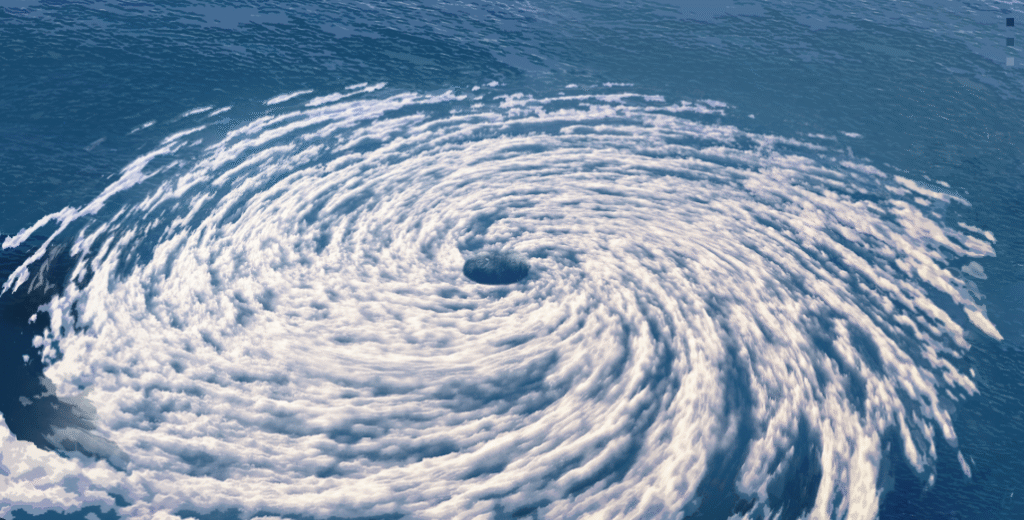
🌊 What Is a Hurricane?
A hurricane is a massive storm system that forms over warm ocean waters near the equator. These storms are known for their strong winds, heavy rain, and swirling clouds. In different parts of the world, hurricanes are also called cyclones or typhoons. They can be as wide as 600 miles and last for several days.YouTube
🔬 How Do Hurricanes Form?
☀️ Warm Ocean Water Is the Fuel
Hurricanes need warm water to form—at least 80°F (27°C). When the sun heats the ocean, the water evaporates, turning into warm, moist air. This air rises into the sky, creating an area of low pressure below. Kids encyclopedia facts from Kiddle+3What’s Happening Around Florida+3National Geographic+3spaceplace.nasa.gov
🌬️ The Birth of a Storm
As the warm air rises, cooler air rushes in to take its place. This cycle causes clouds and thunderstorms to form. If the conditions are just right, these storms can start to spin and grow, eventually becoming a hurricane.
🌀 Why Do Hurricanes Spin?
Hurricanes spin because of the Coriolis effect, which is caused by the Earth’s rotation. In the Northern Hemisphere, this effect makes hurricanes spin counterclockwise. In the Southern Hemisphere, they spin clockwise. Kids encyclopedia facts from Kiddle+1Kids Science Labs+1
🧩 Parts of a Hurricane
👁️ The Eye
At the center of a hurricane is the eye, a calm area where the weather is clear and the winds are light. The eye can be 20 to 40 miles wide. People.com
🌪️ The Eyewall
Surrounding the eye is the eyewall, where the storm’s strongest winds and heaviest rains occur. This is the most dangerous part of the hurricane. Vox+3Axios+3AccuWeather+3
🌧️ Rainbands
These are bands of rain clouds that spiral out from the center of the storm. They can stretch for hundreds of miles and bring heavy rain and wind.spaceplace.nasa.gov+3Ducksters+3online.kidsdiscover.com+3
📏 Hurricane Categories
Hurricanes are classified into five categories based on their wind speeds:
- Category 1: 74–95 mph (119–153 km/h)
- Category 2: 96–110 mph (154–177 km/h)
- Category 3: 111–129 mph (178–208 km/h)
- Category 4: 130–156 mph (209–251 km/h)
- Category 5: 157 mph (252 km/h) or higher
The higher the category, the more dangerous the storm.
🌊 What Is Storm Surge?
A storm surge is a rise in sea level caused by the strong winds of a hurricane pushing water toward the shore. This can lead to severe flooding, especially in coastal areas.
🧼 Why Is Hurricane Water Dangerous?
After a hurricane, floodwaters can be filled with harmful substances like sewage, chemicals, and debris. It’s important to stay out of these waters to avoid getting sick or injured.
🛡️ Staying Safe During a Hurricane
Here are some safety tips to follow:
- Listen to Authorities: Always follow the instructions of local officials.
- Evacuate if Told: Leave the area if evacuation orders are given.
- Stay Indoors: Keep away from windows and doors during the storm.
- Avoid Floodwaters: Do not walk or play in floodwaters.
🌍 Countries Most Affected by Hurricanes
🇺🇸 United States
- Especially in coastal states like Florida, Texas, Louisiana, and North Carolina
- The Atlantic hurricane season runs from June to November
- Example: Hurricane Katrina (2005), Hurricane Harvey (2017)
🇲🇽 Mexico
- Both the Atlantic (Gulf of Mexico) and Pacific coasts are vulnerable
- Often hit by tropical storms and hurricanes from both oceans
🏝️ Caribbean Nations
- Countries like:
- Cuba
- Haiti
- Dominican Republic
- Bahamas
- Puerto Rico (U.S. territory)
- These islands face frequent and intense storms due to their warm surrounding waters
🇵🇭 Philippines
- Known as typhoons in the western Pacific
- The Philippines experiences some of the highest numbers of tropical storms in the world
🇯🇵 Japan
- Also hit by typhoons, especially from July to October
- Strong building codes help reduce hurricane damage
🇧🇩 Bangladesh & India
- In the Bay of Bengal, cyclones (similar to hurricanes) affect coastal regions
- Often cause flooding and storm surges
🌀 Why These Countries?
- Hurricanes form over warm ocean water (at least 26.5°C or 80°F)
- They thrive in regions near the equator where warm, moist air is plentiful
- Countries near these oceans are more prone to storm development and landfall
📚 Learn More About Hurricanes
For more information, check out these resources:
- NASA Space Place: Hurricanes
- National Geographic Kids: Hurricanes
- PBS LearningMedia: The Coriolis Effect
- Ducksters: Hurricanes
🎬 Watch and Learn
To see hurricanes in action and learn more, watch this educational video:
📝 Conclusion
Hurricanes are powerful storms that can cause significant damage, but understanding how they form and how to stay safe can help you be prepared. Remember to always follow safety guidelines and stay informed during hurricane season.
📣 Call to Action
Stay curious and keep learning about the weather! Share this guide with your friends and family to help everyone understand hurricanes better.